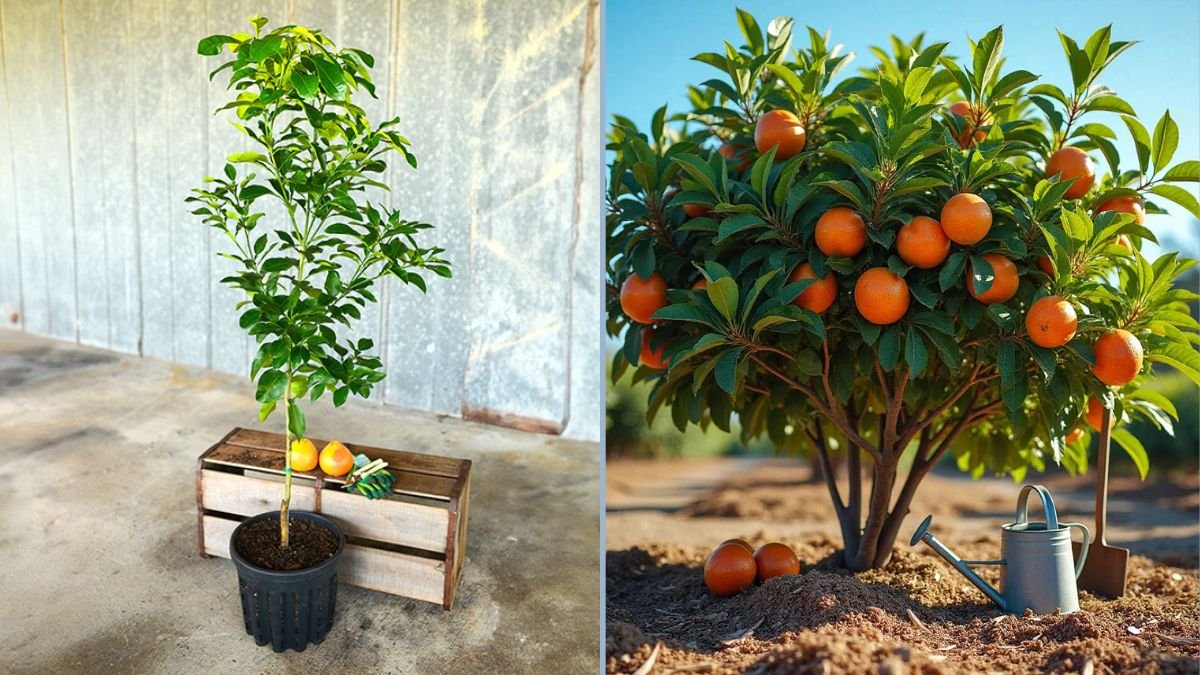The Ruby Red grapefruit is one of the most beloved citrus varieties for home gardeners and commercial growers alike. Known for its sweet-tart flavor, vibrant pink flesh, and large size, it is a favorite for fresh eating, juicing, and culinary creations. Whether you’re a seasoned citrus enthusiast or just starting your backyard orchard, keeping track of your grapefruit tree’s growth, health, and productivity is key to enjoying a bountiful harvest.
In this update, we’ll cover the latest tips on caring for Ruby Red grapefruit trees, including planting, pruning, fertilization, pest management, and harvesting, ensuring your tree thrives year after year.
Why Choose Ruby Red Grapefruit?
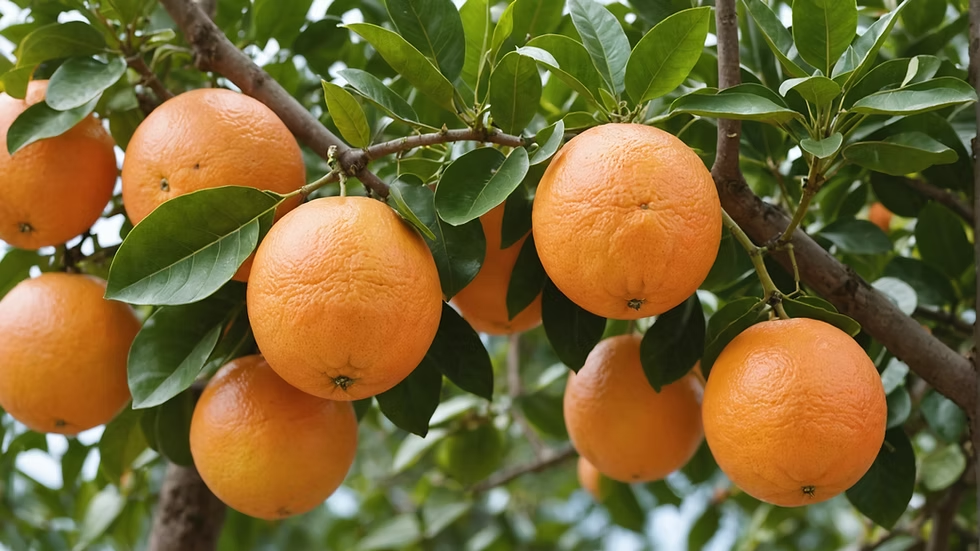
Ruby Red grapefruit stands out among citrus fruits due to several characteristics:
- Sweet and Juicy: Unlike traditional grapefruit, Ruby Red offers enhanced sweetness with lower acidity.
- Vibrant Flesh: The striking deep pink to red interior makes it appealing both on the plate and in juice.
- High Juice Content: Perfect for fresh-squeezed grapefruit juice or smoothies.
- Cold Tolerance: More resilient than some citrus varieties, tolerating mild frost when protected.
- Large Fruit Size: Ruby Red produces medium to large fruits ideal for eating and cooking.
These qualities make it a favorite for home growers who want a productive and visually impressive citrus tree.
Tree Overview
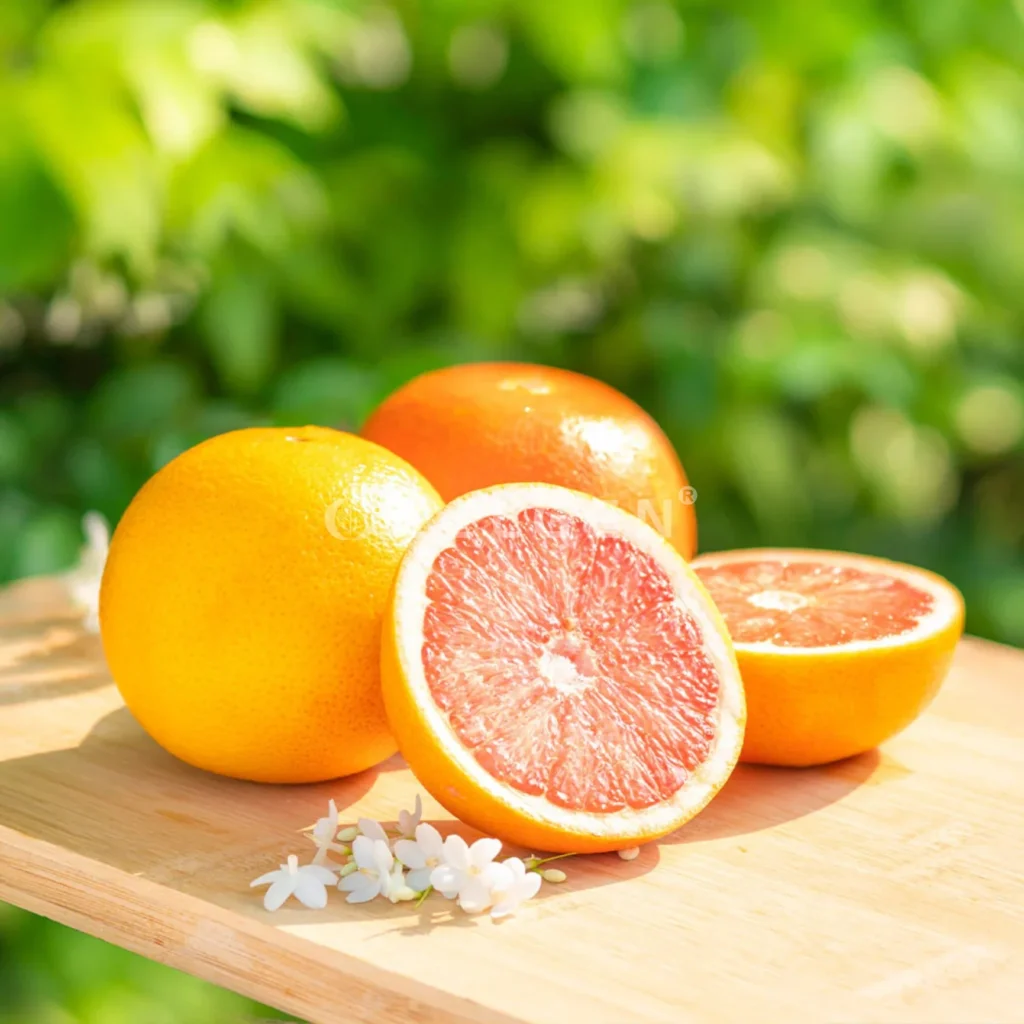
The Ruby Red grapefruit tree is a medium to large citrus tree with an upright, spreading canopy. Key characteristics include:
- Leaves: Glossy, deep green leaves.
- Flowers: Fragrant white blossoms in spring attract pollinators and add ornamental value.
- Fruit: Round, orange-yellow exterior with bright pink flesh, weighing 10–20 ounces.
- Growth Rate: Moderate; trees may take 2–3 years to begin fruiting, but yield increases with age.
Understanding the tree’s growth habits helps you provide the right care and environment for optimal production.
Planting and Location
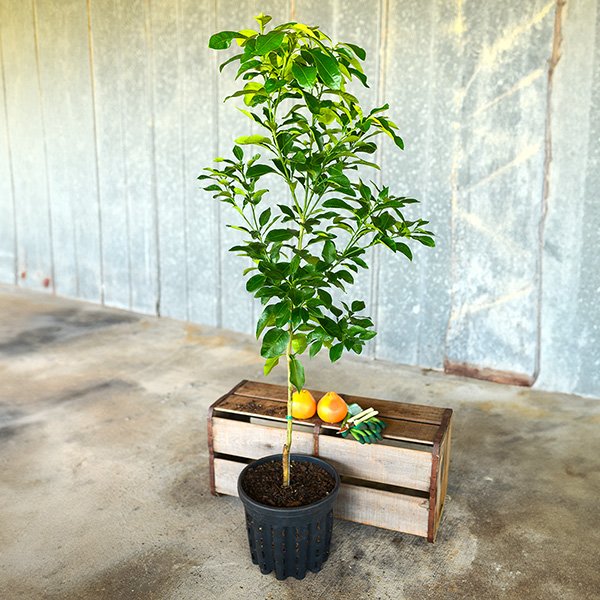
Choosing the right location is essential for healthy growth and fruiting:
Sunlight
- Full sun exposure is critical; Ruby Red grapefruit trees require 6–8 hours of direct sunlight daily.
- Adequate sunlight ensures sweet, juicy fruit and strong growth.
Soil
- Well-draining, slightly acidic to neutral soil (pH 6.0–7.0) is ideal.
- Loamy soil enriched with organic matter supports root health and nutrient uptake.
Spacing
- Plant trees 15–20 feet apart to allow airflow and canopy expansion.
- Sufficient space reduces disease risk and competition for nutrients.
Planting Steps
- Dig a hole twice the width of the root ball.
- Mix native soil with compost for fertility and drainage.
- Place the tree upright, ensuring the graft union is above soil level.
- Fill in the hole, firm the soil gently, and water thoroughly.
- Mulch around the base to retain moisture and regulate temperature, keeping it away from the trunk.
Watering and Drainage
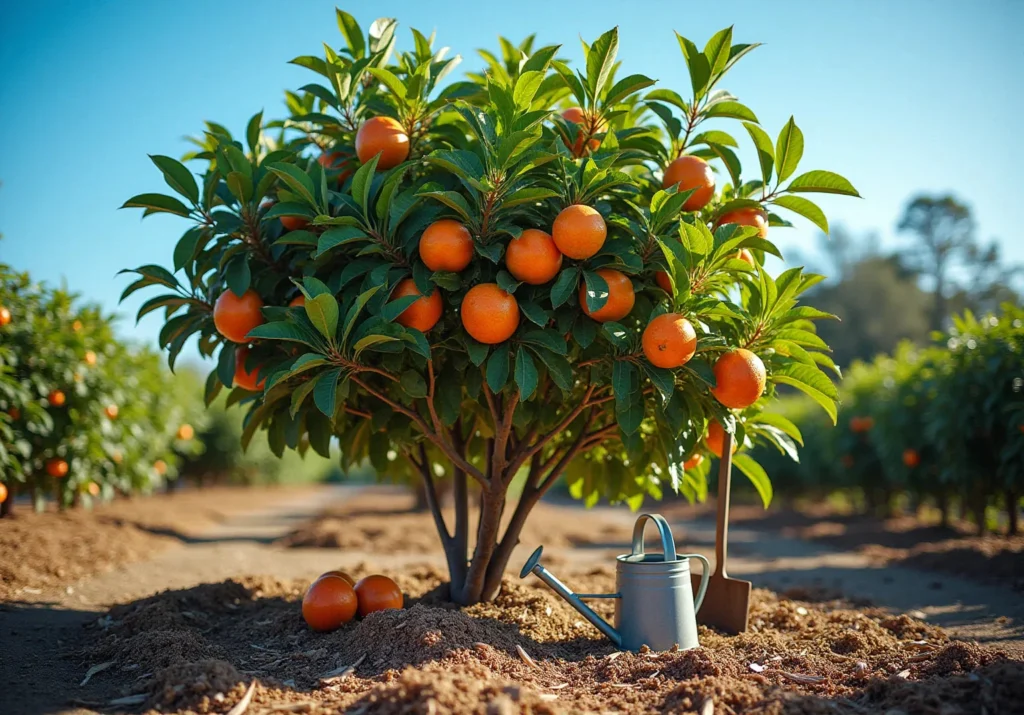
Proper watering is crucial for tree health and fruit development:
- Young Trees: Water regularly to keep the soil consistently moist, promoting strong root establishment.
- Mature Trees: Allow the top 2–3 inches of soil to dry between watering. Overwatering can lead to root rot.
- Drainage: Ensure soil and planting sites allow water to drain freely. Grapefruit roots are susceptible to waterlogged conditions.
Mulching around the base also helps retain moisture and reduce temperature fluctuations.
Fertilization
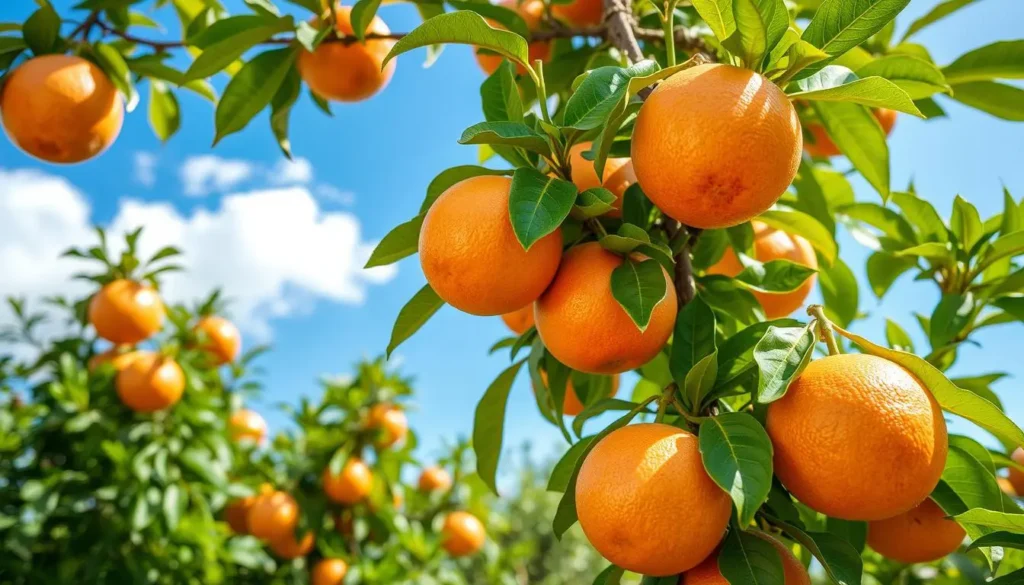
Ruby Red grapefruit trees benefit from regular feeding to maintain vigor and fruit production:
- Use a citrus-specific fertilizer containing nitrogen, phosphorus, potassium, and micronutrients such as magnesium, iron, and zinc.
- Fertilize 3–4 times per year, depending on tree age and soil conditions.
- Reduce fertilization in late fall and winter when growth slows.
- Avoid over-fertilization, which can burn roots and cause leaf damage.
Regular fertilization ensures lush foliage, healthy blooms, and sweet fruit.
Pruning and Canopy Management
Pruning is essential for maintaining a healthy tree and maximizing fruit quality:
- Remove dead, diseased, or crossing branches to improve airflow and sunlight penetration.
- Thin the canopy lightly to prevent overcrowding, reducing disease and pest pressure.
- Avoid heavy pruning that removes too many fruiting branches; grapefruit produces fruit on new and mature growth.
A well-pruned tree produces higher quality fruit and easier harvests.
Pest and Disease Management
Even healthy grapefruit trees are vulnerable to pests and diseases. Monitoring and early intervention are key:
Common Pests
- Aphids: Sap-feeding insects; control with insecticidal soap or natural predators.
- Scale Insects: Appear as small bumps on branches; treat with horticultural oil.
- Spider Mites: Cause stippling and leaf discoloration; manage with water sprays or miticides.
Common Diseases
- Citrus Canker: Causes lesions on leaves and fruit; prune affected areas and apply copper sprays.
- Greening Disease (HLB): A bacterial disease; plant certified disease-free trees and monitor regularly.
- Root Rot: Occurs in poorly drained soil; maintain proper drainage to prevent infection.
Regular observation, combined with good cultural practices, ensures your grapefruit tree remains healthy.
Flowering and Fruit Development
Ruby Red grapefruit trees bloom in spring, producing fragrant white flowers that attract pollinators:
- Pollination: Mostly self-pollinating, but bees improve fruit set.
- Fruit Set: After flowering, fruits develop over 6–9 months, gradually increasing in size.
- Fruit Maturity: Fruit typically ripens in late winter to early spring, depending on climate and care.
Proper watering and fertilization during flowering enhance fruit size, sweetness, and overall yield.
Harvesting Ruby Red Grapefruit
Knowing when to harvest ensures maximum sweetness and flavor:
Signs of Maturity
- Color: Yellow-orange rind; the flesh is deep pink.
- Firmness: Slightly soft but not mushy.
- Ease of Picking: Fruit should detach easily with a gentle twist.
- Taste Test: A sweet-tart taste indicates peak ripeness.
Unlike some fruits, grapefruit does not continue to ripen significantly after picking, so timing is important for optimal flavor.
Post-Harvest Care
- Storage: Grapefruit can be stored at room temperature for a week or refrigerated for up to a month.
- Handling: Avoid bruising the fruit, as it can shorten shelf life.
- Pruning After Harvest: Remove old fruiting wood to encourage new growth and future harvests.
Proper post-harvest care maximizes both fruit longevity and tree health.
Tips for a Thriving Ruby Red Grapefruit Tree
- Select Disease-Free Trees: Start with healthy nursery stock for best results.
- Ensure Full Sun: At least 6–8 hours per day for sweetness and productivity.
- Monitor Watering: Avoid both under- and overwatering.
- Fertilize Regularly: Support foliage growth and fruit production.
- Prune Lightly: Maintain canopy structure without removing too many fruiting branches.
- Protect from Pests and Diseases: Inspect leaves, flowers, and fruit regularly.
- Mulch and Maintain Soil Health: Retain moisture, suppress weeds, and provide nutrients.
Following these tips ensures healthy growth, abundant flowers, and sweet fruit for years to come.
Conclusion
Ruby Red grapefruit trees are a rewarding addition to any backyard or home orchard. With their striking pink flesh, sweet-tart flavor, and aromatic blossoms, they offer both culinary delights and ornamental beauty.
From selecting the right location and soil to proper watering, fertilization, pruning, and pest management, each step plays a crucial role in ensuring a productive and healthy tree. Keeping your grapefruit tree well-cared for will result in abundant, flavorful fruit that you can enjoy fresh, juiced, or in a variety of recipes.
Regular updates, such as monitoring growth and checking fruit development, help track progress and identify issues early, making it easier to maintain a thriving citrus tree. By investing time and care, your Ruby Red grapefruit tree can become a long-lasting source of delicious fruit and garden enjoyment for years to come.
